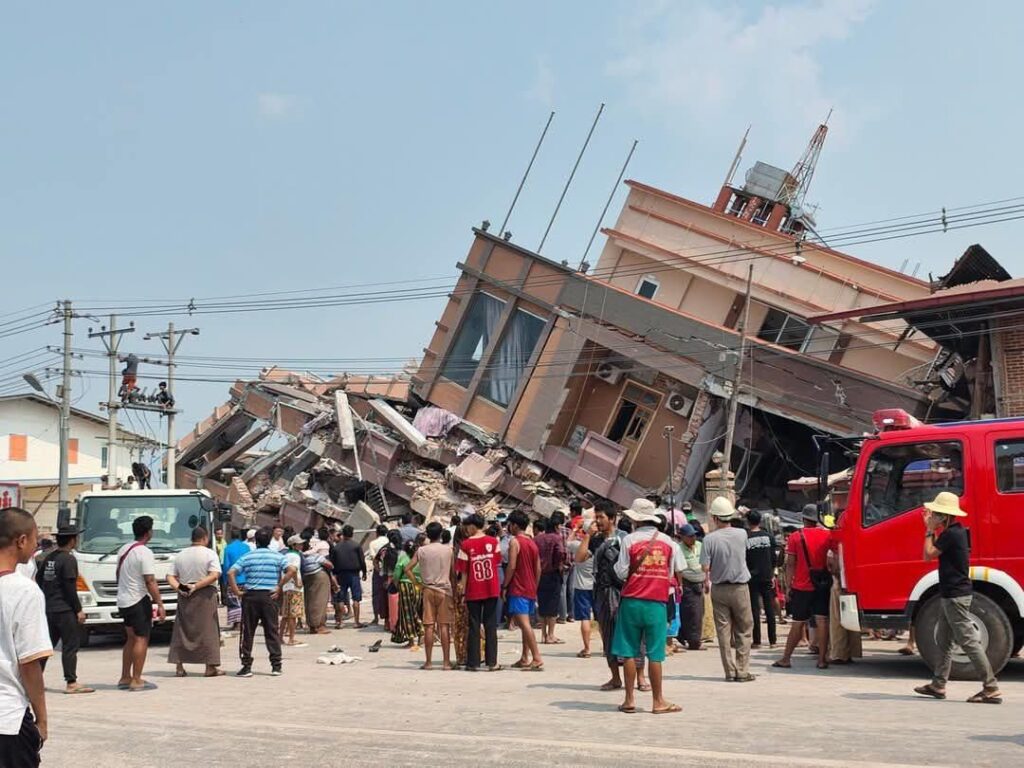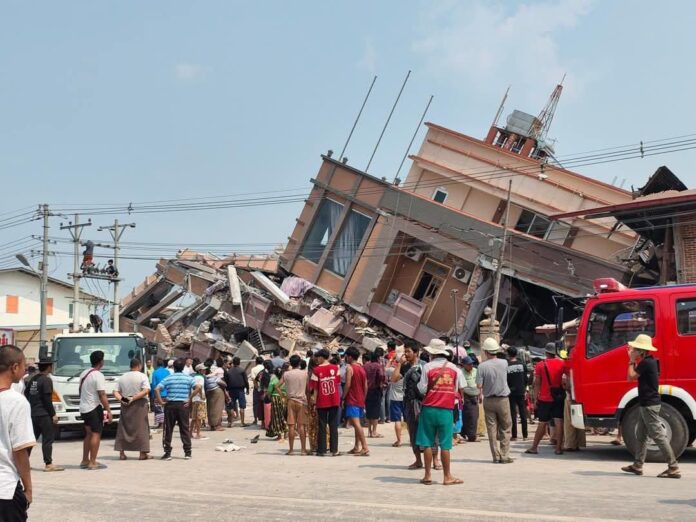One month after a powerful earthquake struck Myanmar on March 28, reconstruction efforts remain largely absent in many of the affected regions, according to local residents and volunteers.
Despite official claims, locals say only around 30 percent of the recovery work has been completed. Efforts so far have focused mainly on distributing food, setting up temporary shelters, and repairing a few damaged roads.

“Only about 30 percent of the work has been done and that’s just basic support to keep people from fleeing,” said U Sein Win, a former lawmaker from Maubin. “There’s no long-term solution. People still don’t have jobs, and many can’t afford to demolish their damaged homes. In some cases, the cost of demolition is nearly equal to the house’s value.”
He also noted a rise in thefts, blaming the lack of security in quake-hit areas.
The earthquake caused widespread destruction across Naypyidaw, Mandalay, Sagaing, Bago, and southern Shan State, damaging homes, roads, and bridges. In southern Shan’s Inle region hit by both the earthquake and subsequent flooding—residents have begun rebuilding, but progress is slow due to a shortage of building materials such as bamboo, timber, and roofing sheets.
In Ainghtauntgyi village, where 250 homes were destroyed, only four houses have been rebuilt so far, according to a local volunteer.
“We managed to construct 65 temporary shelters, but rebuilding has stalled due to material shortages,” the volunteer said.
On April 24, the military junta announced that it had received over 115 billion kyats in donations, along with foreign aid in various currencies, including USD 2.4 million and significant contributions in Korean won, Indian rupees, Thai baht, and Singapore dollars.
Vice Senior General Soe Win claimed these funds are being systematically used for relief and reconstruction, but residents in areas like Inle say they have yet to see any substantial assistance from the junta.
Resistance groups and local observers warn that if reconstruction does not begin before the rainy season, vulnerable buildings may collapse, causing further casualties and damage.
As of April 25, the earthquake has claimed 3,763 lives, injured over 5,100 people, and left 110 missing nationwide.

